The first thing that really strikes you about Singapore is how incredibly rich it is.
Measured by GDP per capita at purchasing power parity, Singapore is the third-richest country in the world, behind only Ireland and Luxembourg (whose numbers are distorted by their tax haven status), and about 65% richer than the United States. Singapore’s numbers may also be inflated to some degree, because some non-permanent foreign workers are apparently not counted in the denominator — interestingly, neither government workers nor businesspeople I talked to seemed to know exactly which categories of people were included in the calculation. The Singaporean government counts “non-residents” at about 30% of the population; if none of those are counted in the denominator of per capita statistics, it would mean Singapore’s true per capita GDP (PPP) is more like $93,000. That would still make it slightly richer than the U.S., and among the very highest-income countries on the planet. (Update: The Singaporean government has assured me that non-residents are counted in the denominator, meaning Singapore really is as rich as the headline numbers indicate.)
And you can really feel it, as soon as you step off the plane. Changi Airport tops most lists of the best airports in the world, and with good reason — it’s sort of a cross between a luxurious private lounge and the Hanging Gardens of Babylon.
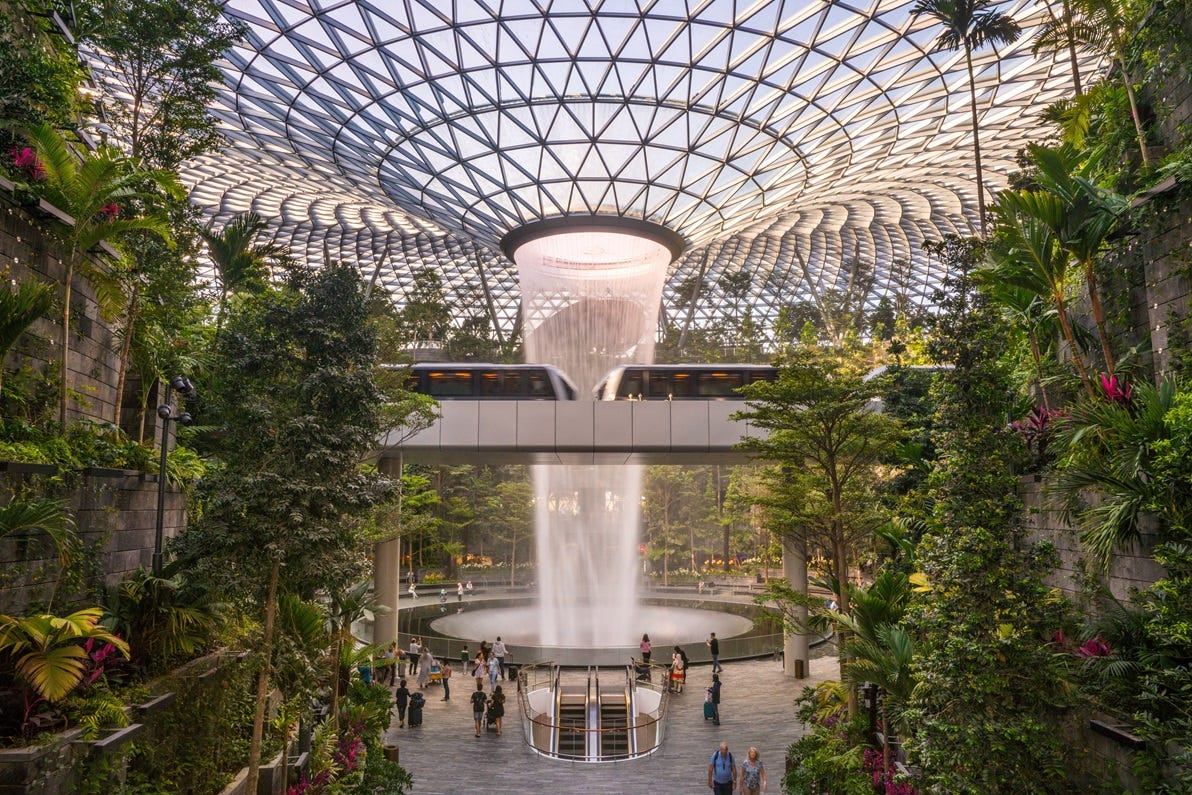
But the airport isn’t some sort of Potemkin project built to impress people who are just passing through. The city itself is full of buildings that, while not quite as nice as the airport, are certainly lavish and impressive. The photo at the top of this post — a vast office/retail/residential complex called Marina One — is only one of many such wonders.
Singapore is incredibly built up — almost as built up as Tokyo. And like Tokyo, the ubiquity of massive buildings with elaborate futuristic exteriors and spotless manicured grounds conveys the sense of being inside a giant, inhabited spaceship.
But what’s even more impressive about Singapore’s built environment is the greenery. Singapore is on the ocean and just a few miles from the equator, so it’s hot and humid pretty much all the time. In that kind of environment, the cheapest way to avoid having your city be overrun by rain forest is to just remove all the plants. Instead, Singapore has decided it wants to be the world’s greenest city. That takes an incredible amount of money and effort to pull off without having the city start to look like a ruin in a jungle (like parts of Taipei). All that foliage must be landscaped, and that’s never cheap. So Singapore’s gorgeous greenery is really a spectacular demonstration of wealth.
In fact, the greenery isn’t just around the buildings; it’s in them too. Singapore leads the world in “skyrise greenery” — i.e., covering the exteriors of its towers with foliage.
Americans will recognize this type of architecture as part of the solarpunk aesthetic. It provides shade, reduces pollution, and makes the city look inviting and comfortable. But like parks and other green spaces, plant-covered buildings require high maintenance costs. In a solarpunk future, those costs are presumably easy to pay, because solar energy is so cheap; in the real world, Singapore is able to take care of its green buildings because Singapore is really, really rich.
But perhaps Singapore’s most impressive feat is that despite the tropical heat and humidity and the presence of all of this lush greenery, there are effectively zero bugs. This is because Singapore slaughters all of its bugs with a zeal bordering on the fanatic. That would cost any city a heck of a lot of money, but Singapore has a heck of a lot of money to spend.
So as an aside, how did Singapore get so rich? In fact, its development model is pretty similar to Ireland’s: a very small English-speaking country, a great education system, tons of high-skilled immigration, and an industrial policy that focuses relentlessly on attracting foreign direct investment. Singapore’s main investor is the U.S., for whose businesses Singapore acts as the “gateway” to Asia in much the same way Ireland is the “gateway” to Europe. It’s not a model that can easily be copied by larger countries, of course, since the FDI has to come from somewhere. But Singapore has executed this small-country gameplan with amazing skill — even better, in many ways, than Ireland. (The fact that it has done this while also surviving in a rough geographic neighborhood, upholding racial diversity, and maintaining extremely low crime is even more impressive, but that’s a story for another day.)
In fact, there’s one important regard in which Singapore is leaving Ireland in the dust, and that’s housing.
Housing, housing, HOUSING!!!
One thing you immediately notice in Singapore is all the high-rise housing. It looms up absolutely everywhere you look. Some of the apartment complexes look absolutely titanic in scale, similar to what you’d see in China, but nicer-looking:
Other buildings look older and plainer, but still not too bad — nicer, I’d argue, than most of the apartment buildings in New York City. And the interiors get renovated.
And there’s often a decent mix of high-rise and low-rise buildings:
In fact, abundant housing is one major reason why Singapore is so rich.
The reason Singapore has all of this housing, of course, is the country’s fabled “public” housing policy. There’s no shortage of explainers out there, but here are the basics. The government of Singapore owns most of the land, and has a government agency called the Housing Development Board (HDB) that builds a ton of housing. It then sells this housing, mostly to first-time homebuyers (i.e. young people), at a cheap price. who are then free to resell it. The combination of the discount for first-time buyers and the government’s ability to make prices appreciate slowly and steadily over time means that HDB apartments function not just as a cheap place to live, but also as a sort of wealth-building pension system. In other words, in Singapore there’s no contradiction between using your home as a place to live in, and using it to build wealth!
Pretty amazing.
OK now, one part of what I just said was actually not true. The government doesn’t actually sell HDB apartments to people; it sells them 99-year leases. If a lease has 98 years left on it, that’s pretty close to ownership, and so when Singapore’s system started out, it was basically a homeownership system (in fact, Singaporean homes that are called “freehold”, or privately owned, are technically on 999-year leases!). Remember that Singapore was founded in 1965, so no 99-year leases have had time to expire yet. But in a few more decades, it’ll become a big pain in the neck, since people whose leases expire will have to move to new apartments. And people are now starting to think about that day, which is messing up the market for leases and causing some apartments to start depreciating.
The 99-year lease thing was a pointless policy on the Singaporean government’s part. As long as the government owns the land, it can always make the residents move out if it needs to redevelop an old building — basically, that would be like a condominium where the government controls the condo association. Adding a time limit for each apartment that would make people move out on some arbitrary date was an unnecessary additional step.
But that minor point aside, Singapore’s HDB system is an absolutely amazing solution to the housing problems that afflict most other nations. Basically, the government owning and developing the land allows it to control housing supply so as to produce abundant affordable housing and predictable slow appreciation. Ireland, with its notorious housing shortage, is at risk of losing the pharmaceutical industry to Singapore — its main rival for American pharma FDI — simply because Singapore can build housing and Ireland cannot. If I were in charge of Ireland, I would be desperately looking for some way to emulate the HDB.
In fact, I’d be looking for ways to emulate the HDB if I were America, too. In fact, the Biden administration has been trying to pass a pilot program that looks pretty Singaporean to me:
The Biden-Harris Administration recently announced the Neighborhood Homes Tax Credit, along with down payment assistance for select first-time homebuyers. The program is designed to create a path to homeownership for first-generation or low-wealth buyers whose parents have never owned a home, either.
The Neighborhood Homes Tax Credit has not yet been signed by Congress. If it does pass, it will allocate $16 billion in funding to build or rehabilitate 400,000 new homes across the U.S., according to a statement from the White House issued on Monday, Oct. 16. Additionally, the package will provide $10 billion in down payment assistance and $100 million to supplement first-time homebuyers.
U.S. states should be looking into programs like this as well.
Anyway, it’s worth mentioning that not everyone in Singapore — and not everyone in the middle class — lives in HDB flats. Although the country is tiny, there are some suburban-style areas farther out, where much of the housing is low-rise and privately owned. A lot of it looks like this:
This isn’t a sprawling ranch house with a lawn, but it’s a lot of living space, with plenty of privacy. And yet this sort of construction allows an area to be very dense, even without high-rises. Certainly something to consider as a “missing middle” option in America.
The Singapore stroads
Now, I will say that there was one thing that bothered me about Singapore’s urban environment. Its layout was surprisingly car-centric.
Singaporeans mostly get around by train and bus; only a third of the population even owns a car at all. The train system is great — not quite as good as Japan’s, but nothing is. It’s very easy to get around on foot.
But when you’re walking around, you’re very often going to be walking on a narrow sidewalk on the side of a very large street. Here, for example, is a picture I took in Little India, which is one of Singapore’s most vibrant ethnic neighborhoods:
The main shopping street is a giant four-lane road! There wasn’t much traffic when I took this picture (partly because I waited until there were no cars to obstruct the shot), but cars pass frequently enough that you’re sucking down a lot of exhaust.
Nor was this a particularly rare occurrence; much of the city center was filled with gigantic arterial roads much bigger than the one pictured above, and a lot of the city’s shops and restaurants were along the sides of these roads. The result was that it often felt like Singapore was a city built for cars, even though car ownership is quite low.
In fact, Americans have a word for thoroughfares like this: “stroads”. Coined by the urbanist nonprofit Strong Towns, “stroad” refers to a wide high-speed road along which pedestrians are also expected to walk and shop. America’s stroads are worse than Singapore’s, but Singapore had quite a few.
Theories as to why Singapore chose this development pattern abound — some say it’s necessary for truck transport and logistics, others say the government prioritizes the interests of rich car owners. Someone I talked to even suggested that wide streets were thought to help with riot control during Singapore’s turbulent early history. In any case, it’s strange to have so much of the land area of a pedestrian-centric city reserved for cars.
The way to fix this is to widen the sidewalks. A road with a narrow sidewalk feels unsafe for pedestrians, because you’re so close to the cars. It also puts pedestrians in close contact with car exhaust. This isn’t particularly nice for walking around:
Widening those sidewalks would allow people to stay farther from cars, and would allow the installation of railings and other barriers to give people a sense of being protected from the automobiles hurtling by. That may require sacrificing some lanes of traffic, but oh well.
Here’s a great example of a more pedestrian-friendly street in Singapore:
If I were the Singaporean government, I’d aim to make more streets like this. If they can afford to cover the city in perfectly manicured greenery with zero bugs, they can afford to make streets that are more pleasant for the pedestrian masses.
Anyway, stroads aside, you should definitely visit Singapore sometime if you haven’t. The fabulous wealth and futuristic solarpunk buildings are only two of the attractions — there’s also amazing food, fun ethnic neighborhoods, lovely views, interesting history, and a pretty spectacular diversity of architectural styles.
Just remember not to accidentally bring any marijuana, or they’ll beat you with a cane and send you to prison for decades.

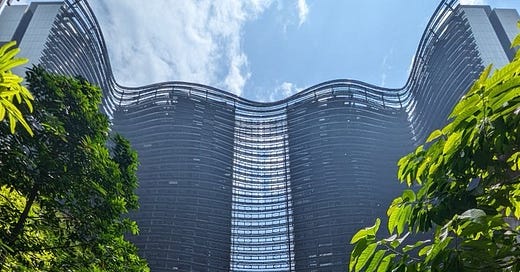



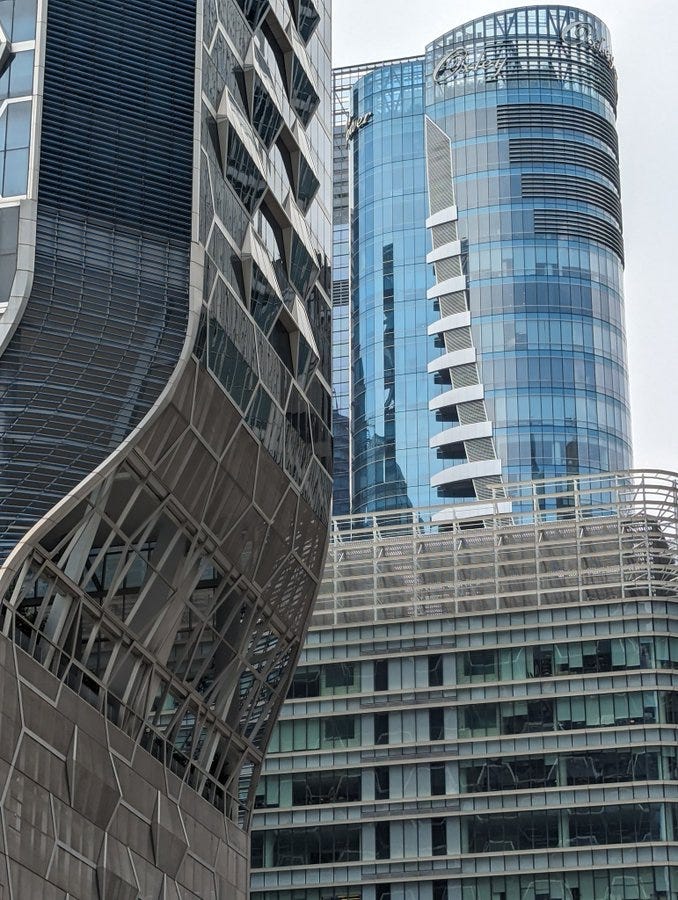
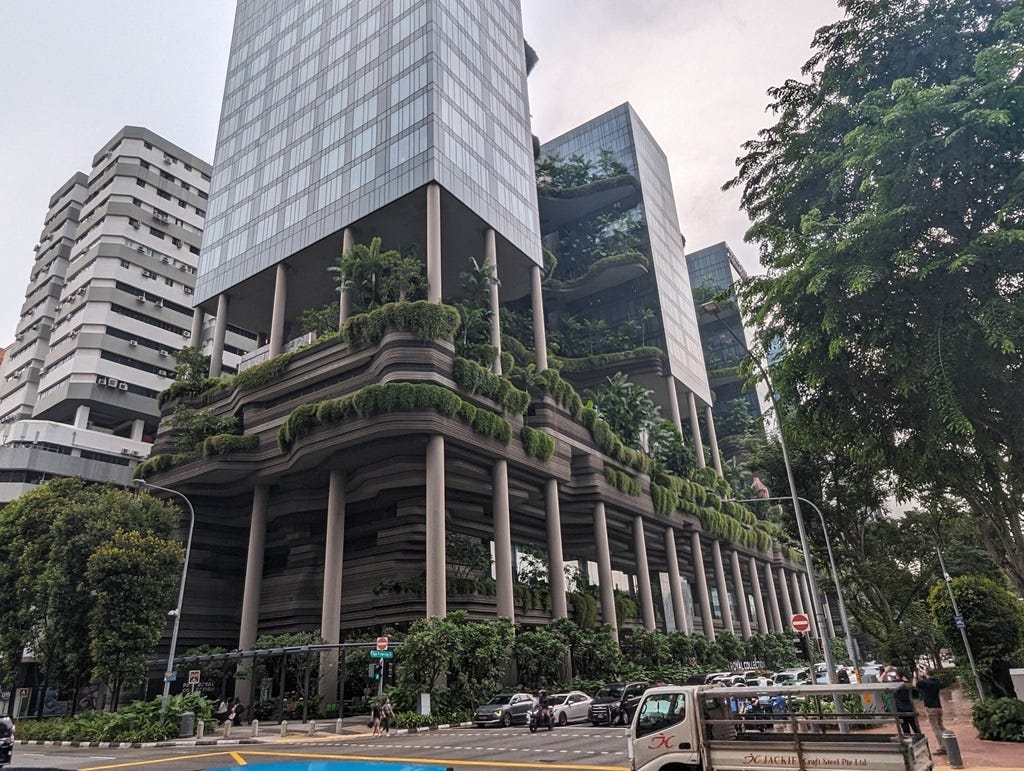
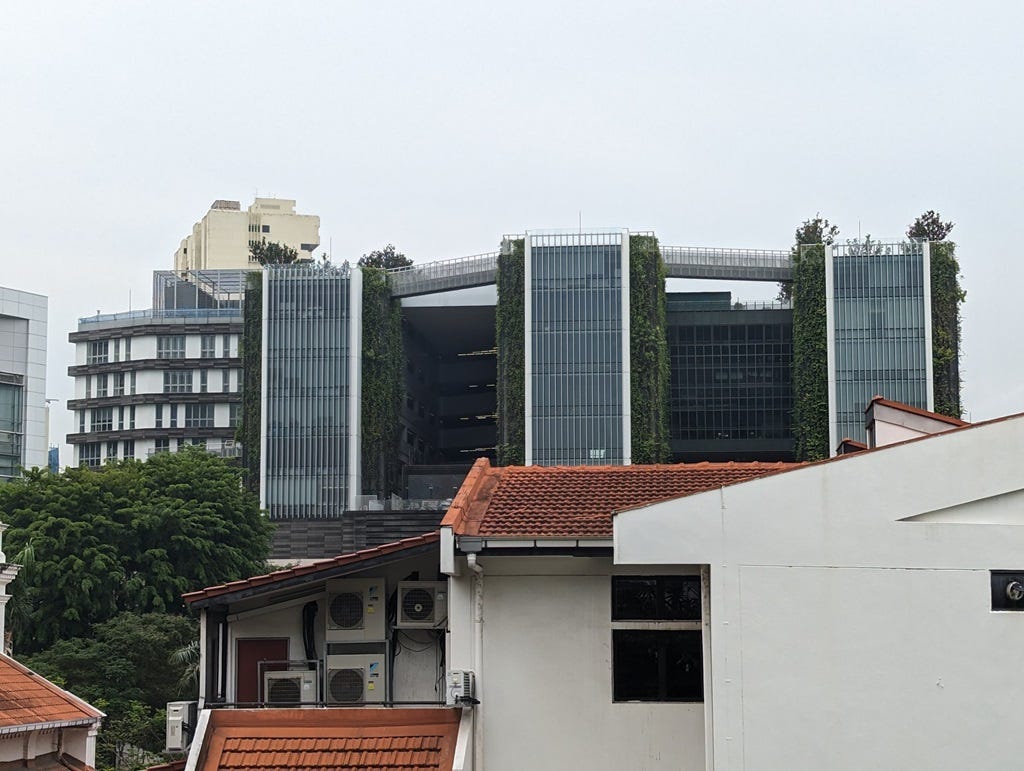
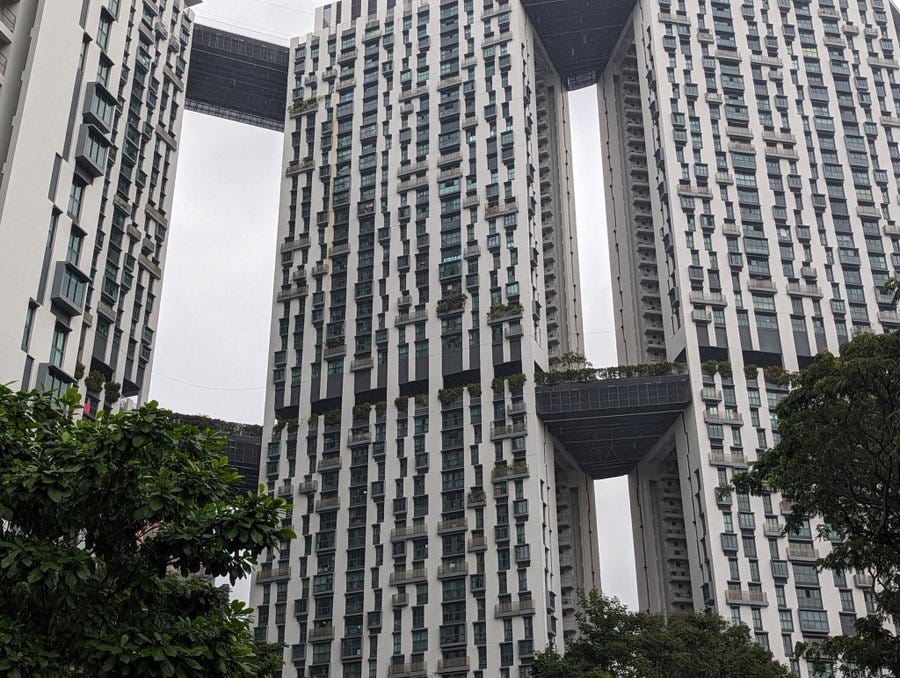
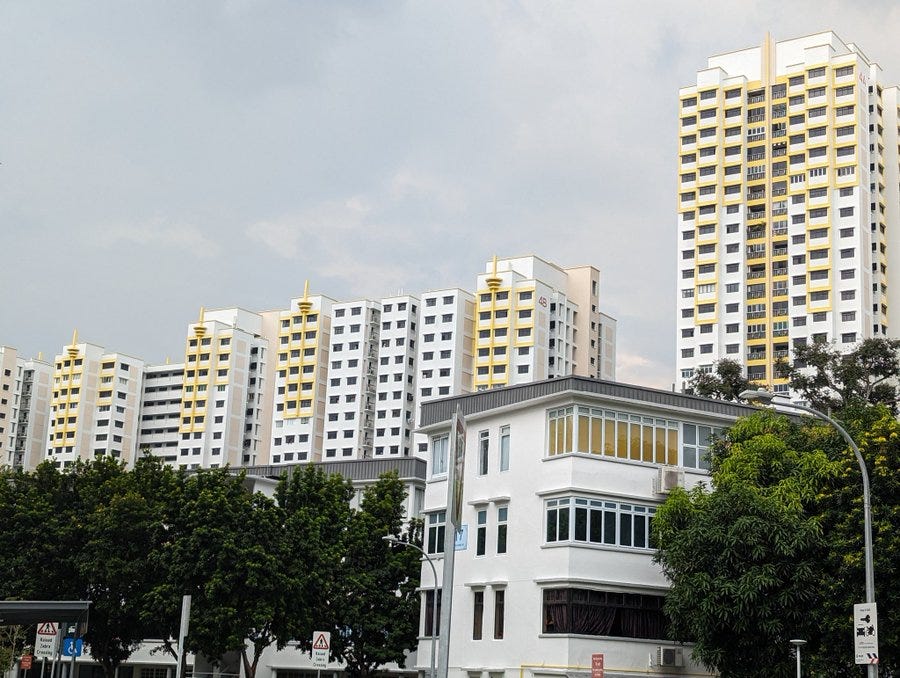
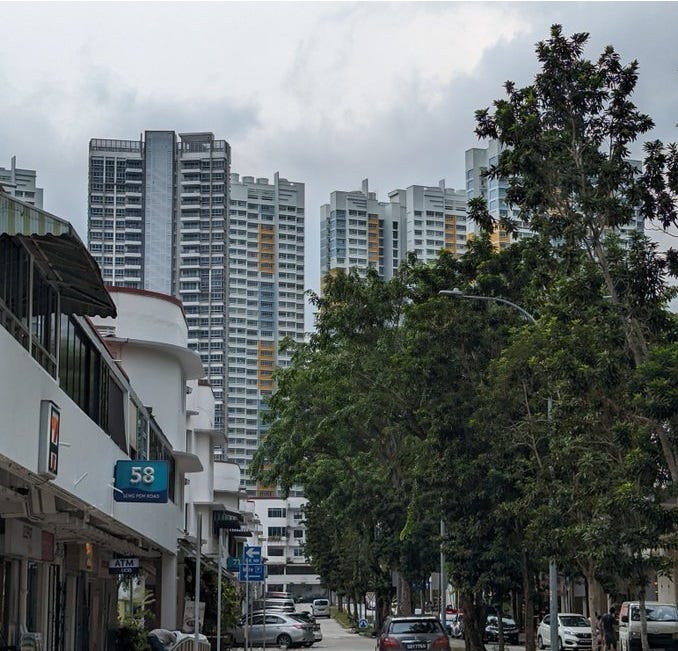
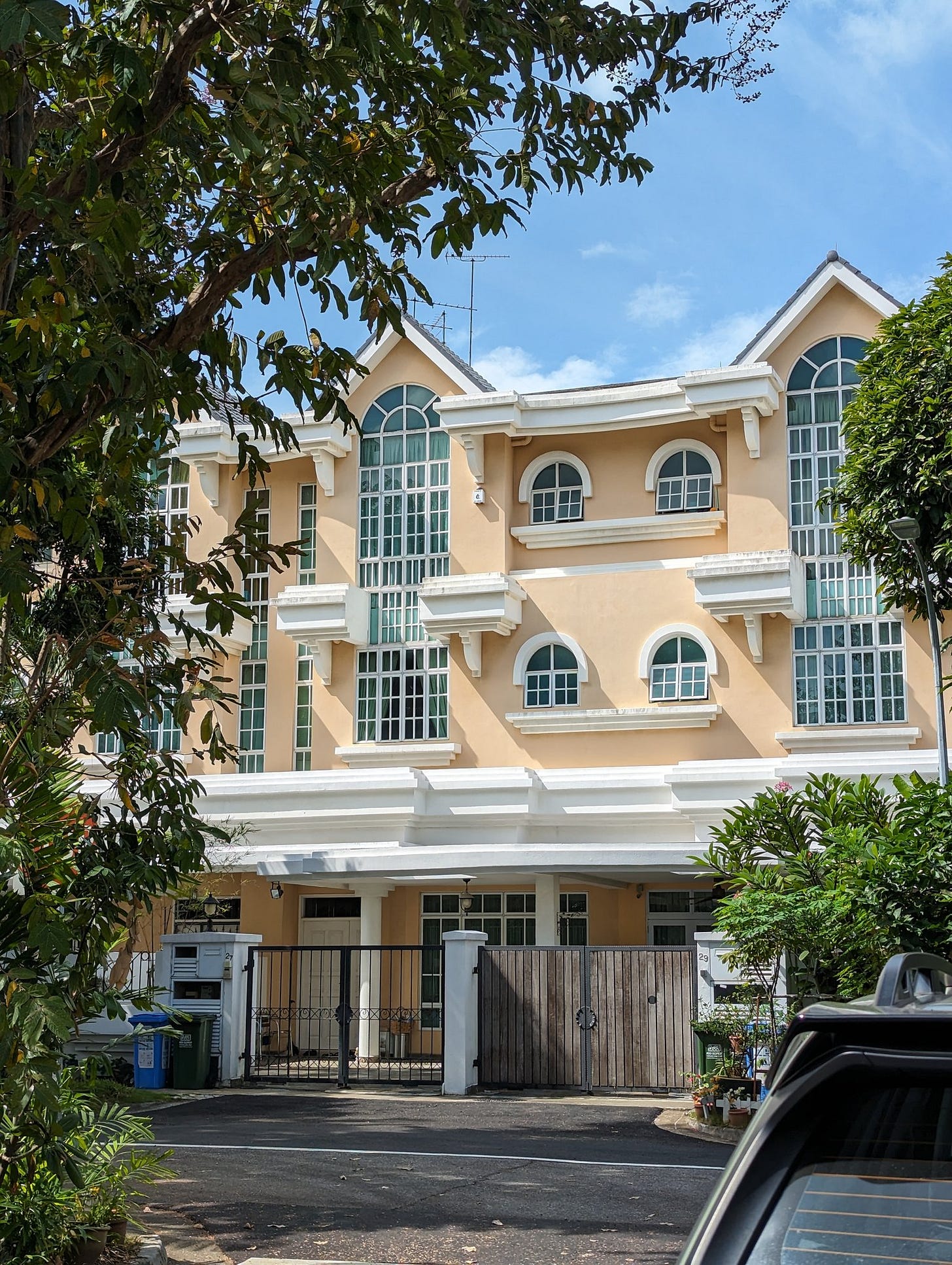
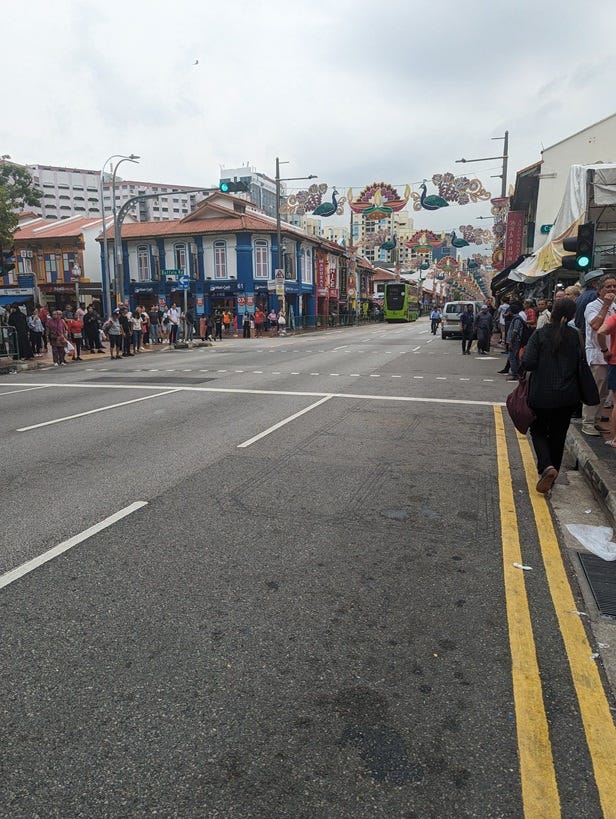
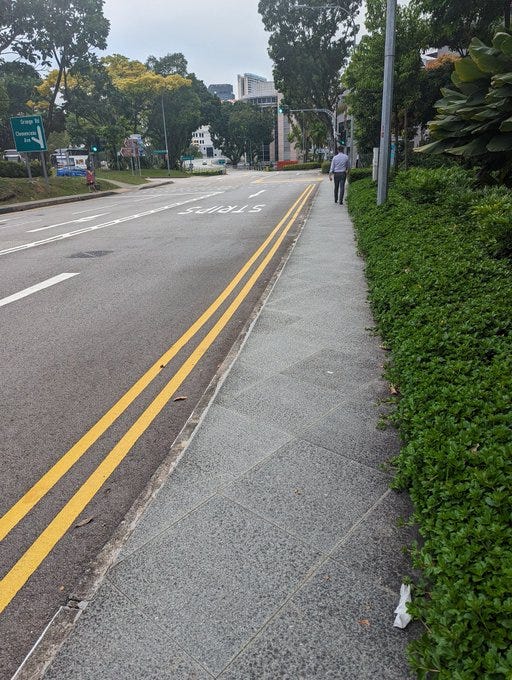
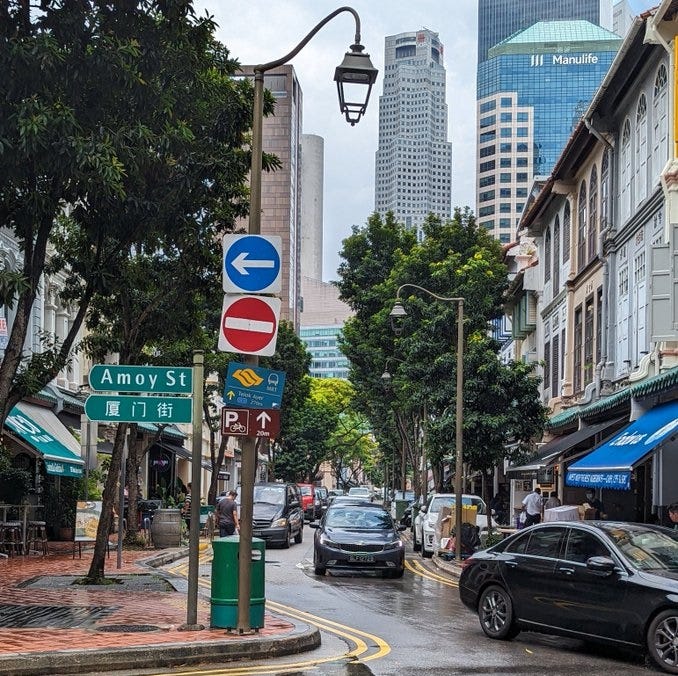
The thing that struck me flying into Singapore was the number of ships anchored offshore. I only learn later how critical location was to global trade, and how that was a natural monopoly from which the economy could grow.
ALL shipping heading from China or Japan toward Europe viathe Suez Canal passes Singapore.
Singapore has actually the world's second busiest port.
You missed a few hidden jewels:
1. The Central Provident Fund: basically if social welfare were run properly. There’s no question of Social Security running out of money in SG. The money is yours instead of the young subsidizing the old as in the US.
2. Nor is there one of people dying due to lack of funds to pay for healthcare. Medisave, Medishield, Medifund etc + monopsony power means that healthcare is very cheap and very good.
3. An excellent education system with proper streaming and few hangups about ethnic balance. Students can be taught at their own pace without being held back by laggards.
4. A professional police force and system of public order that means people can walk at night without fear and leave their houses unlocked. Not a vagrant in sight, smell or hearing range on the streets or in public transit. Unfortunately, many in the USA consider this fascism because they can’t get over the fact that bad things are bad and some people deserve only punishment and coercion.